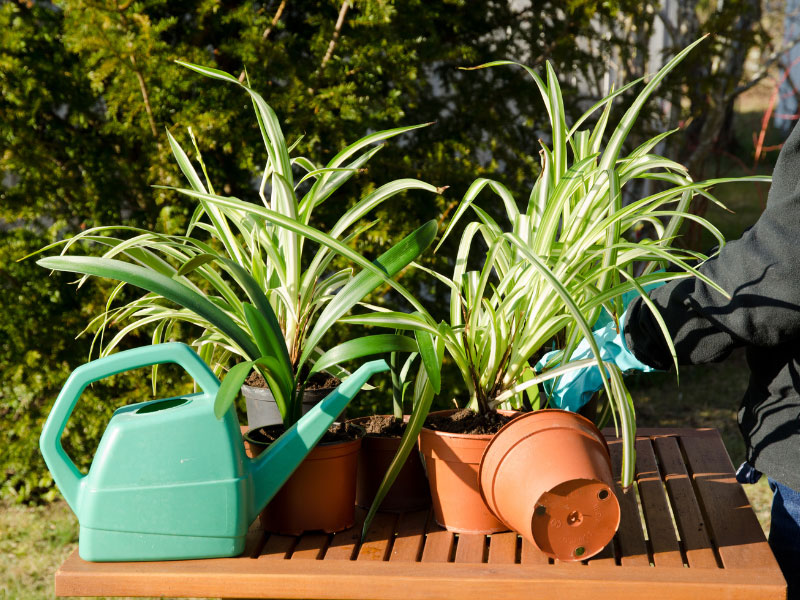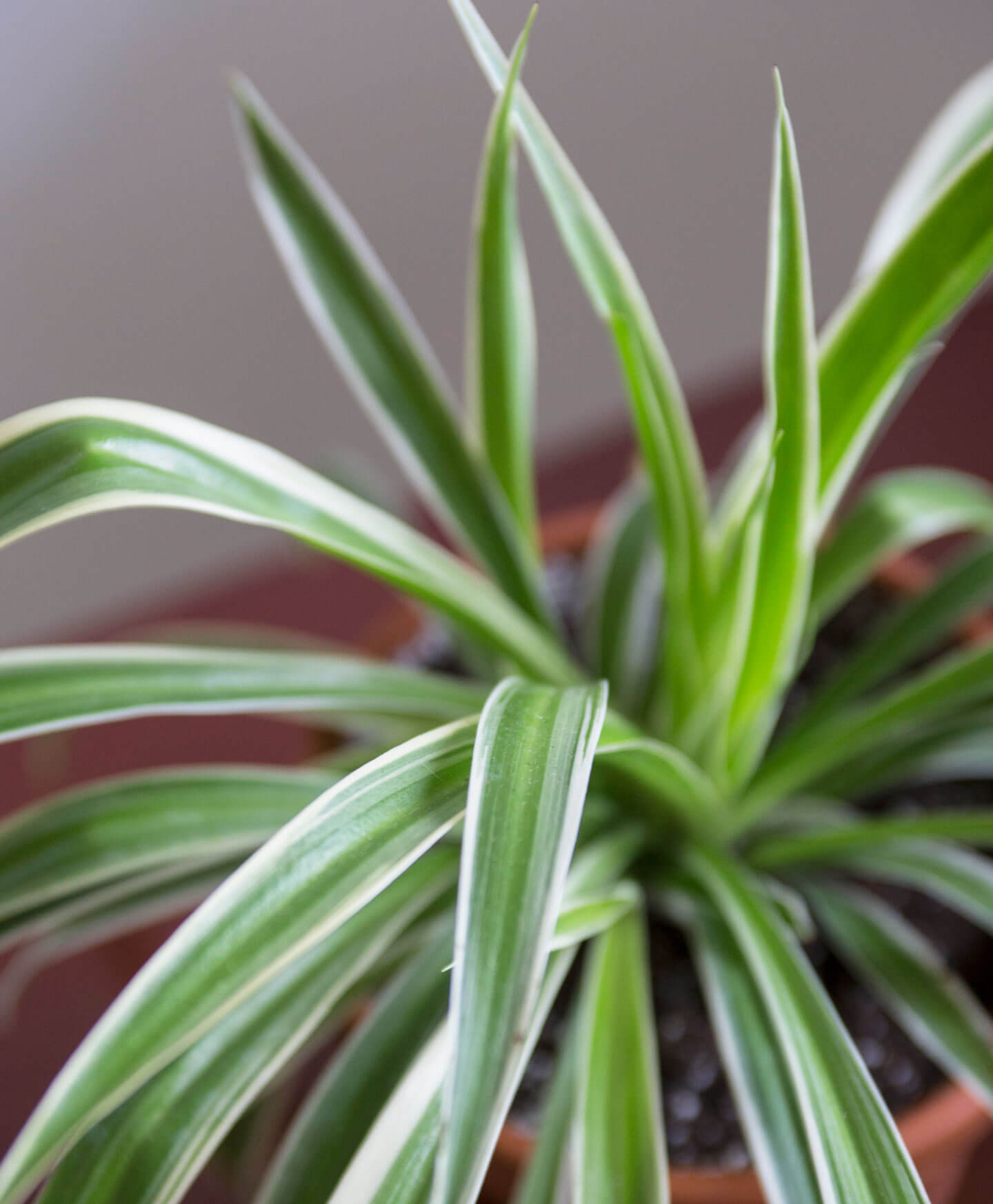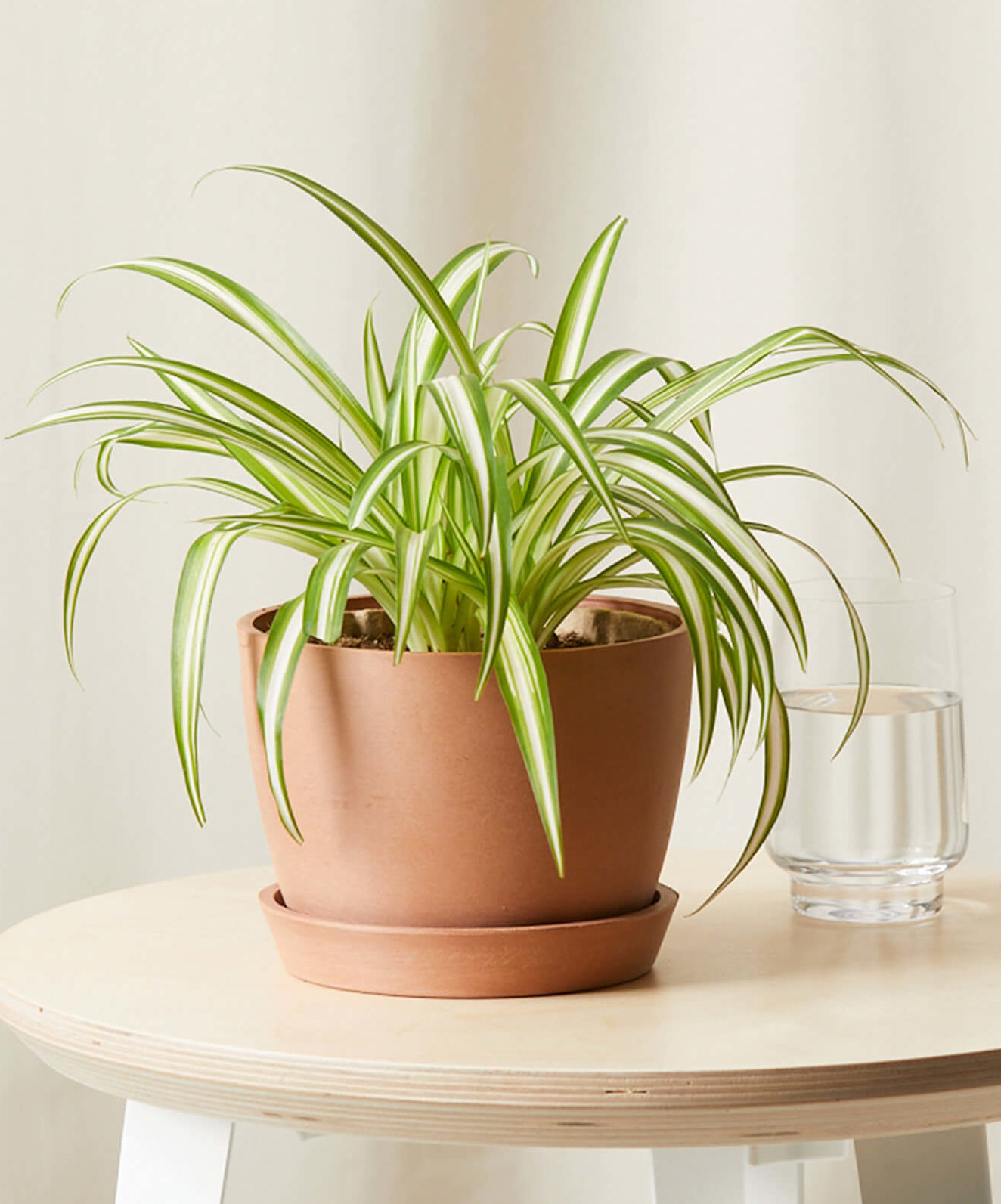Spider plants (Chlorophytum comosum) are popular and easy to care for houseplants. Their long green leaves with white stripes make them an attractive addition to any indoor space. However you may notice the leaves turning pale or even white over time. What causes this discoloration and how can you restore your spider plant’s vibrant green hue?
What Causes Spider Plant Leaves to Turn White?
There are a few common reasons spider plant leaves can turn white or pale:
Overwatering
Too much water is one of the most common culprits of spider plants turning white. These plants prefer their soil to dry out between waterings. Consistently soggy soil leads to root rot and prevents the roots from taking up nutrients properly. This stresses the plant, causing the leaves to lose their color.
Underwatering
On the flip side, not watering enough can also lead to color loss. If the soil dries out too much between waterings, the spider plant becomes stressed. Without adequate moisture, it cannot carry out photosynthesis effectively, resulting in pale leaves.
Low Light
Spider plants thrive in bright, indirect light. Too little light exposure can make the leaves turn pale or white as the plant is unable to produce enough chlorophyll. This essential pigment gives leaves their green color. Lower light means lower chlorophyll production.
Temperature Extremes
Temperatures that are too hot or too cold can stress spider plants. Optimal temperatures are between 60-80°F. If your plant is exposed to extremes outside this range, such as next to drafty windows or heat vents, leaves may start to fade.
Nutrient Deficiencies
Lack of nutrients like nitrogen, magnesium, and iron can cause discoloration. Without enough of these minerals, spider plant leaves are unable to maintain their healthy green pigment. Using an inadequate or unbalanced fertilizer can lead to deficiencies.
Pest Infestations
Spider mites, mealybugs, and other pests can suck sap and chlorophyll from the leaves. This robs them of their color. Check the undersides of leaves carefully for signs of an infestation. Tiny webs and white specks indicate spider mites. Cottony clusters signal mealybugs.
Age
As spider plants mature and reach old age, their leaves naturally start to pale and fade. This is a normal part of the aging process. Older leaves near the base typically turn white first.
Sunburn
Too much direct sun can burn spider plant leaves. This causes bleaching, especially on the leaf tips and edges. Move your plant to a shadier spot if you notice these signs of sun damage.
How to Restore Spider Plant’s Green Color
If your spider plant’s leaves have turned white or pale, don’t panic. With a little TLC, you can often revive the vibrant green color. Follow these tips:
-
Check soil moisture – Let the top few inches dry out between waterings. Water thoroughly until it runs from the drainage holes.
-
Move to a bright spot – Spider plants need at least 4 hours of indirect light daily. An east or west-facing window is ideal.
-
Maintain optimal temperature – Keep the plant between 60-80°F. Move away from drafty areas.
-
Fertilize regularly – Use a balanced liquid fertilizer every 2-4 weeks in the spring and summer.
-
Treat pests if needed – Quarantine and treat any infestations. Insecticidal soap or neem oil work well.
-
Re-pot annually – Repot in fresh potting mix each spring to provide new nutrients.
-
Prune old leaves – Remove any shriveled or totally white leaves to focus growth on new leaves.
-
Be patient – It can take weeks or months to restore vibrant color after addressing underlying issues.
With proper spider plant care optimized for light, water, temperature, and nutrients, you should see those leaves turn green again. Don’t be afraid to prune any remaining white leaves. The energy will go towards producing new, colorful growth. With time and patience, your spider plant will return to its former glory!
If many of the leaves remain faded or new growth is still pale, your plant may be reaching old age or suffer from an incurable pest infestation. At that point, it may need to be discarded and replaced with a new spider plant. But try the fixes first – spider plants are resilient and often rebound well!
Frequently Asked Questions
Still have concerns about your spider plant’s changing colors? Here are answers to some common questions:
How long does it take for a spider plant to recover from white leaves?
It can take anywhere from 2-8 weeks for a spider plant to regain its color after fixing underlying issues. Proper care must be given during this time, along with patience.
Will new spider plant leaves grow back green?
If the underlying problems are addressed, new leaves should have a normal green color.Trim any remaining white leaves to focus growth on new foliage.
Can a spider plant recover from totally white leaves?
It depends on the cause. If due to old age, pests, or disease, full recovery may not be possible if damage is severe. But spider plants are hardy and can often bounce back well, as long as proper care is given.
Should I remove white leaves from my spider plant?
Yes, pruning away any shriveled or totally faded leaves can help redirect energy and nutrients to new growth. Use clean scissors or shears for removal.
What should I do if just the leaf tips are white?
White leaf tips are usually from sunburn or salt buildup. Move to a shadier spot and flush soil as needed to prevent spreading. Trim off the white portions to improve appearance.
When should I repot my spider plant to help with white leaves?
Repotting in fresh soil annually in the spring provides a nutritional boost. Use new, well-draining potting mix for best results.
Transforming a Fading Spider Plant Back to Vibrant Green
A pale spider plant can be disheartening, but there is usually a way to nurse it back to health. With the proper troubleshooting and care, your plant can regain its vibrant green luster. Check for common issues like overwatering, sunlight problems, and pests. Then optimize its care and be patient for new colorful growth. With dedication, your spider plant can make a full recovery!

If you notice the green striping on your Spider plant is fading, it’s likely because it’s very thirsty! Fading leaves may also be droopy and limp.

Let’s get your Spider Plant on the road to recovery.
Give it a drink!
Your Spider Plant can dry out a bit between waterings, but be sure you’re not underwatering your plant. Keep a consistent watering schedule–water when the top 50% of the soil is dry.
If you accidentally let your Spider Plant’s soil dry out completely, you may see leaves go limp, droop, lose color, and possibly start to brown. If the soil is extremely dry all the way through the pot, a thorough soak is in order.
Here’s how to soak-water your Spider Plant:
- Place your plant in your sink or tub without the saucer. Fill your basin up with about 3-4″ of water. Make sure the water isn’t hot!
- Allow your plant to soak up water through the drainage hole in the bottom of the pot for at least 45 min.
- Feel the top of the soil after your plant has been soaking–has the water reached the top 2-3” of soil?
- If not all the soil feels saturated, water your Spider Plant slightly from the top of the soil to help speed up the saturation.
- When your plant’s soil is evenly damp, drain the sink/tub and allow the plant to rest while it drains thoroughly. Place the plant back on its saucer and back in its proper spot.
Increase the humidity
Your Spider Plant will appreciate a boost in humidity, too. Increase the humidity around your plant by misting the leaves on a regular basis, using a pebble tray, or moving a humidifier nearby.

